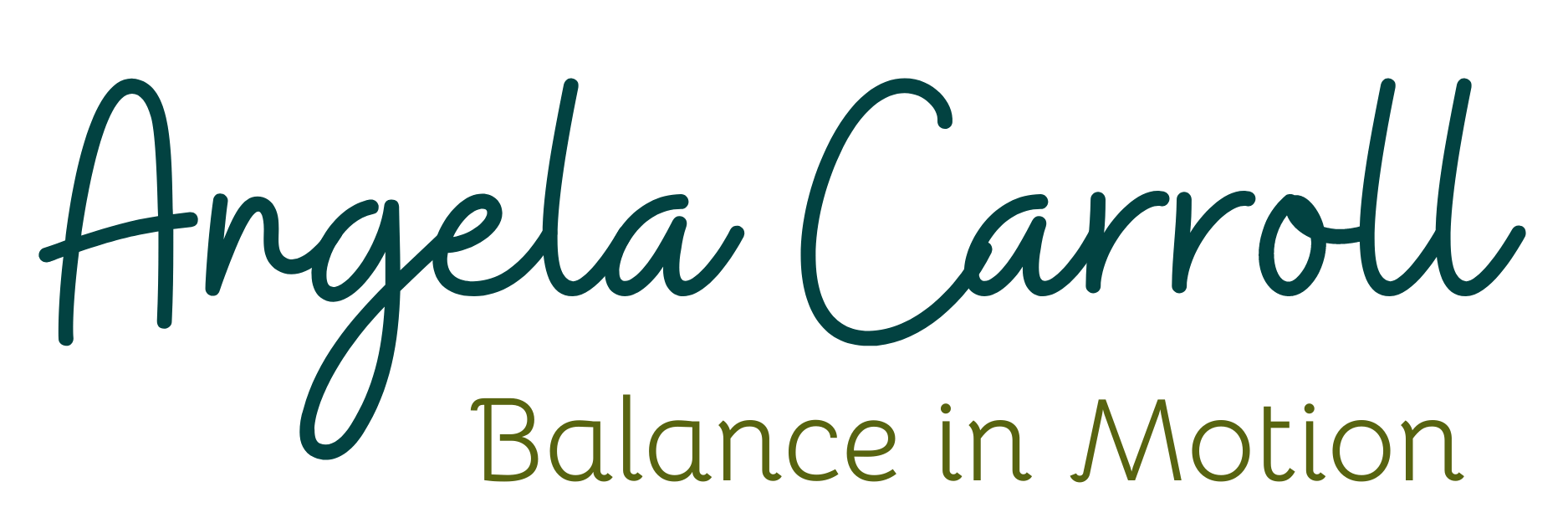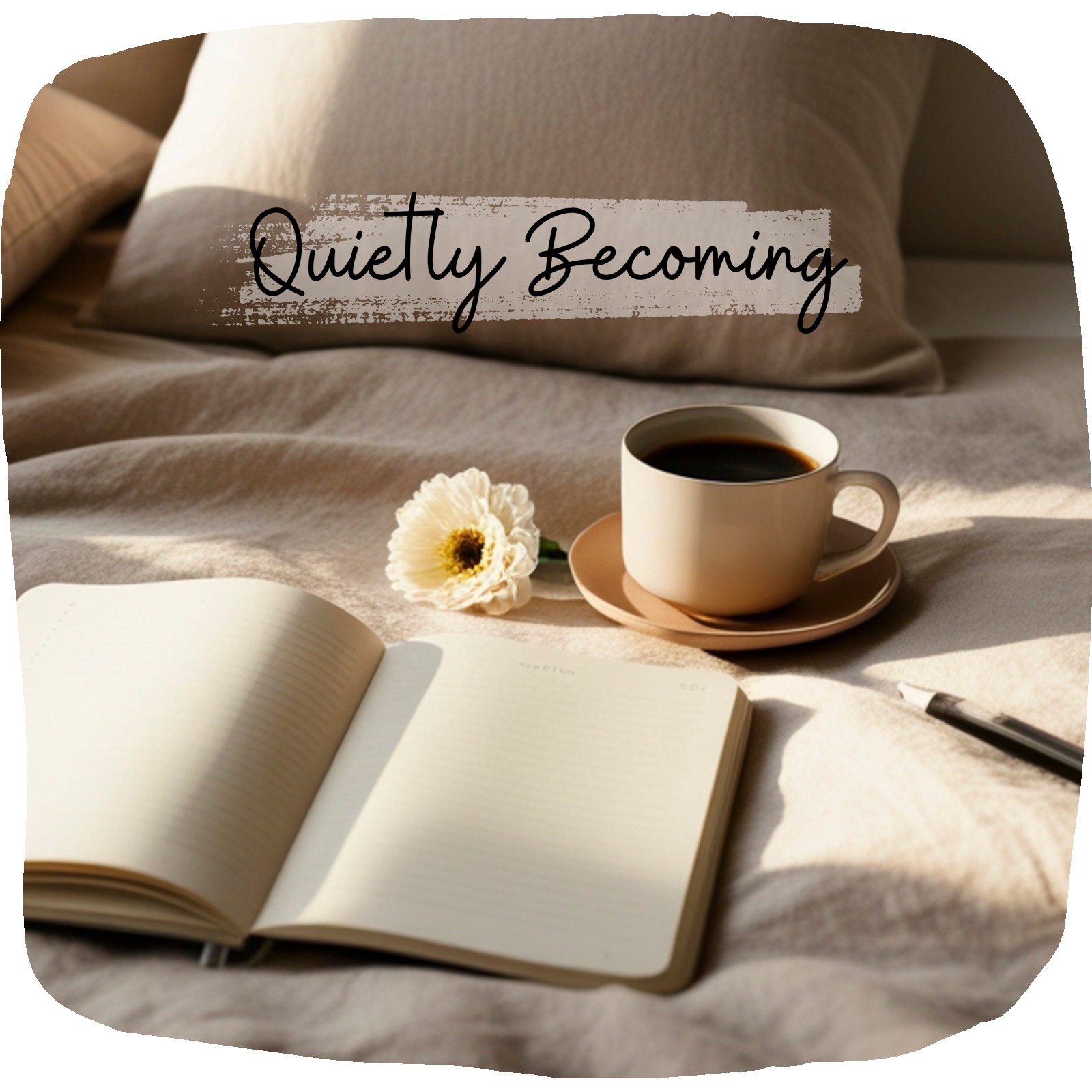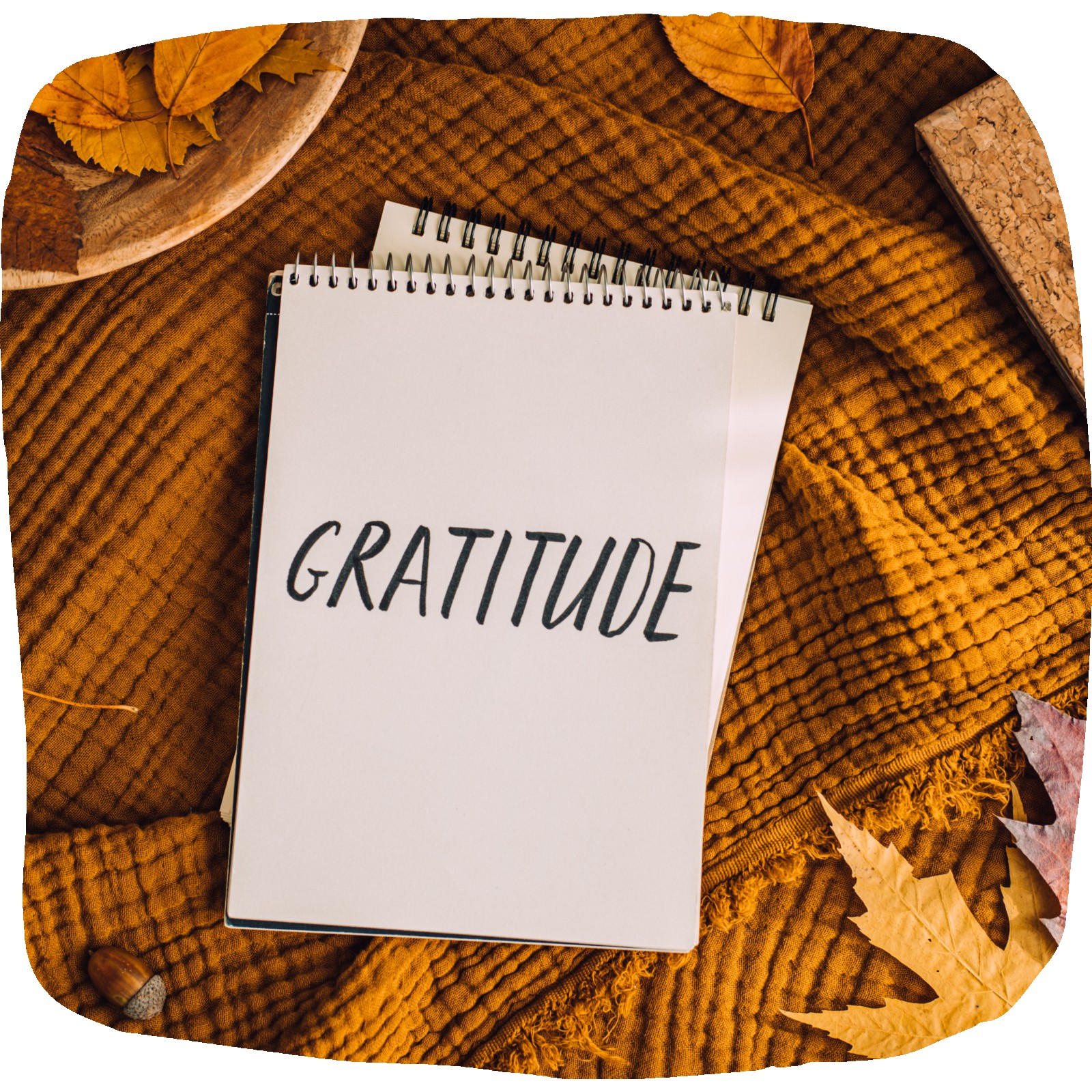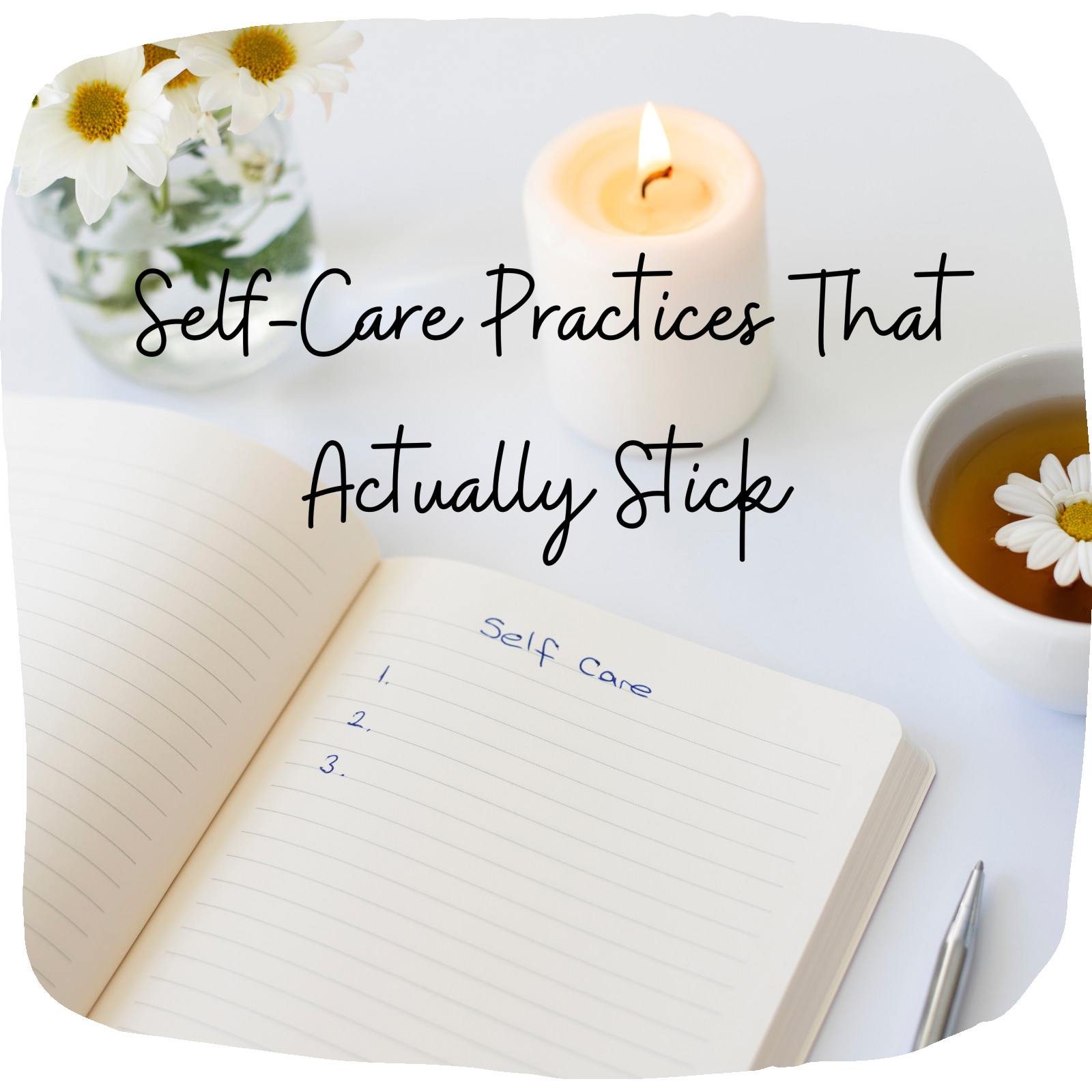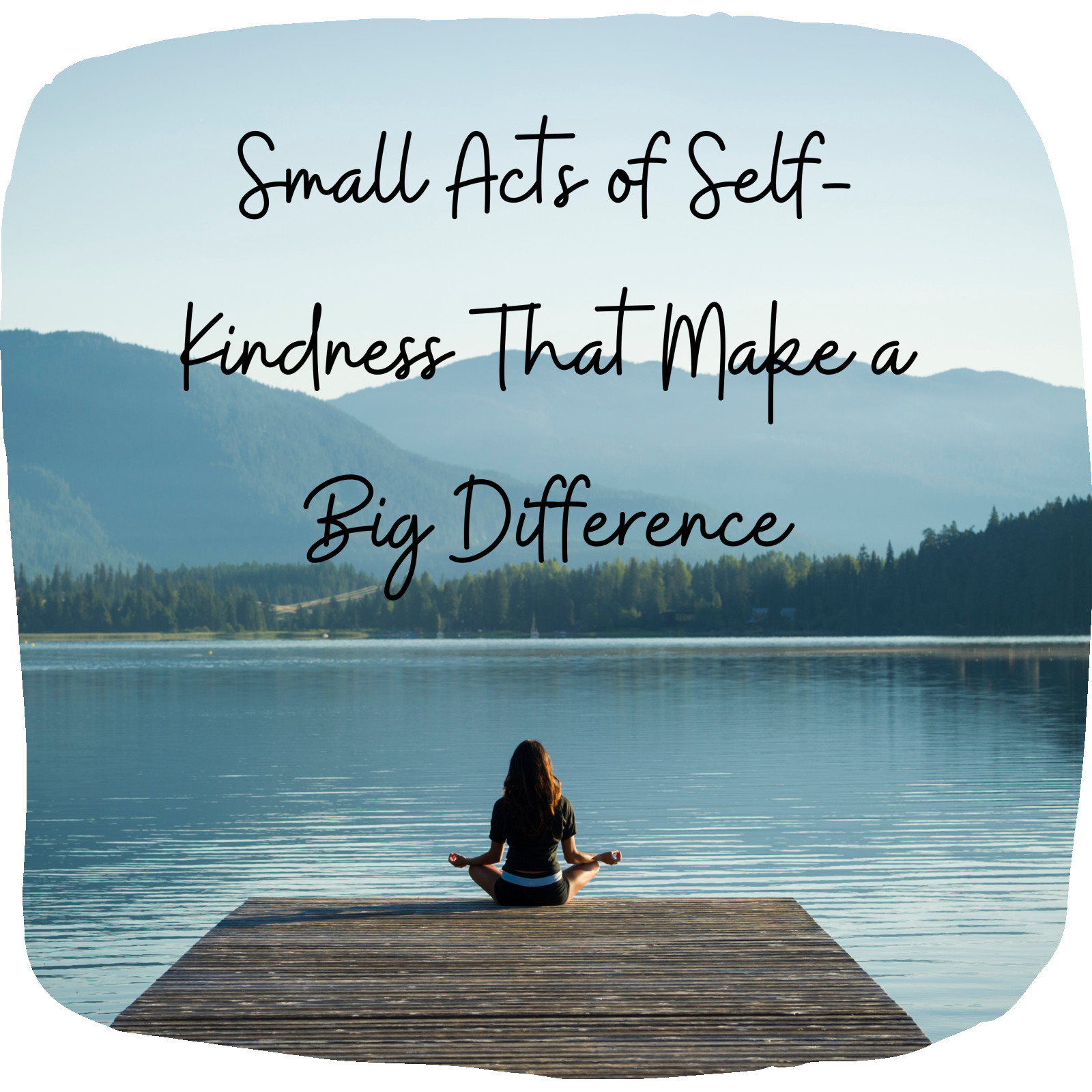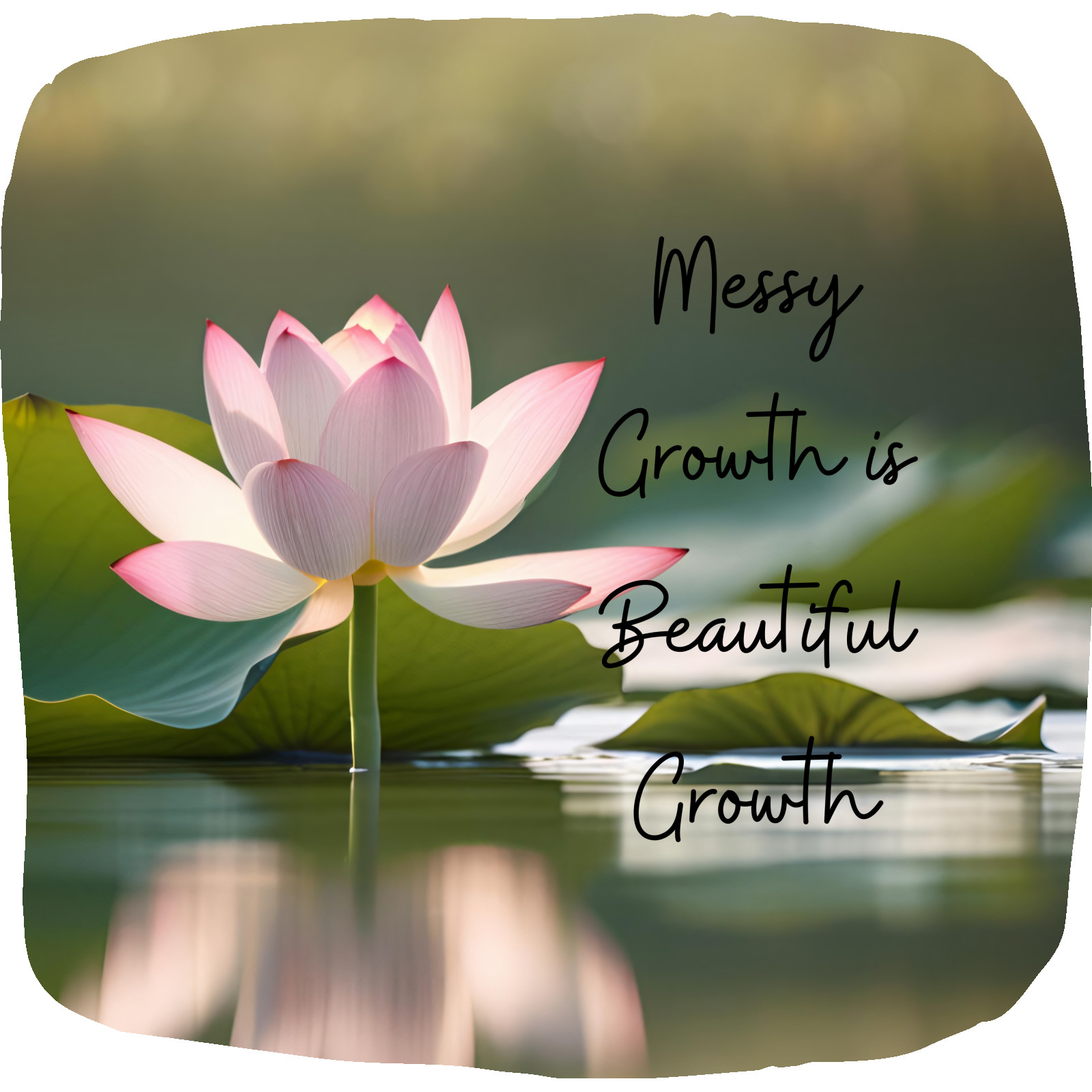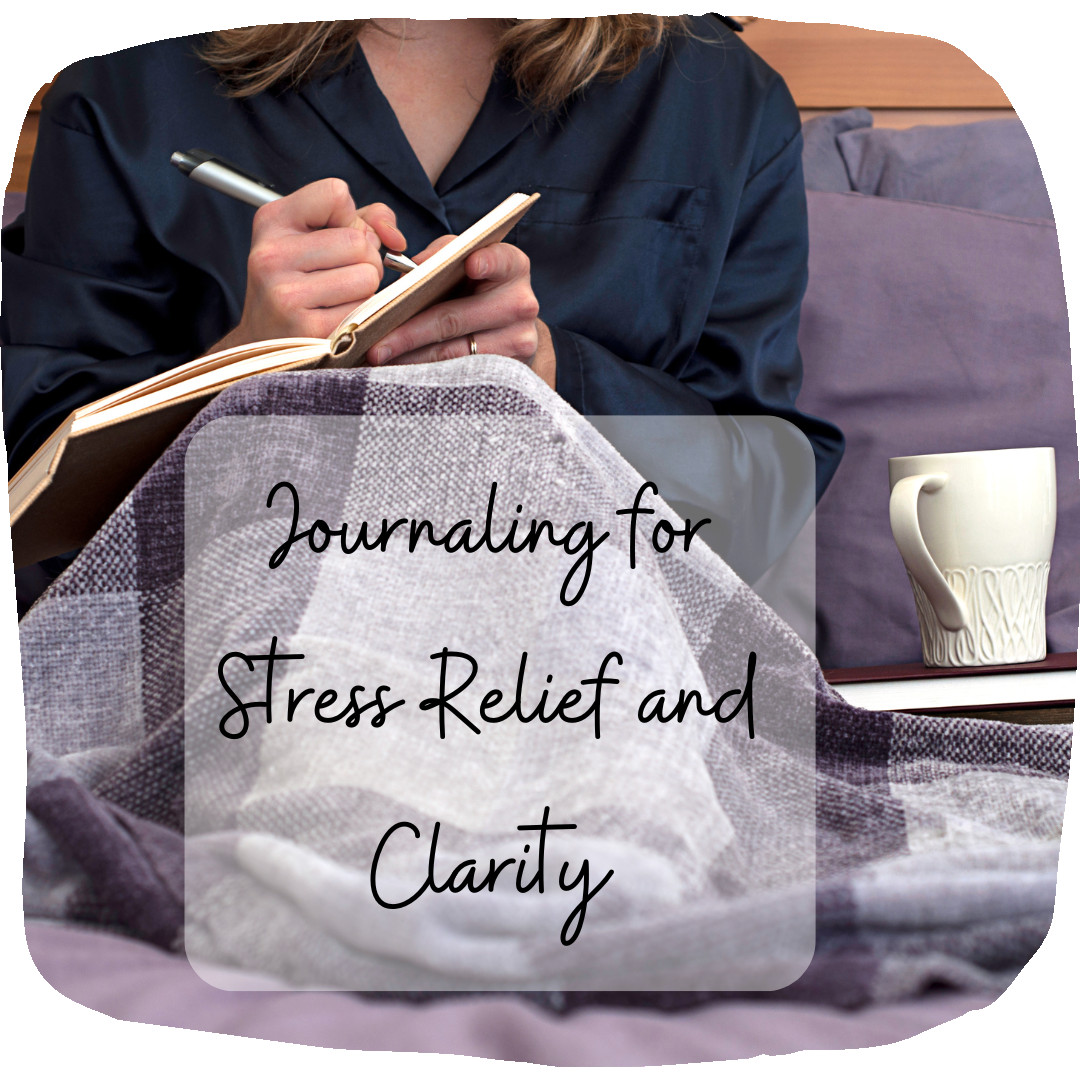
Hey there Amazing One,
Ever had one of those days where your thoughts feel like they’re bouncing around, making your chest tight and your brain foggy? Stress has a sneaky way of piling up, doesn’t it? Something I’ve found incredibly helpful during those moments is journaling.
Don’t worry. This isn’t about writing a novel. It’s about taking just a few moments to pause, connect with yourself, and untangle the knot of emotions. Journaling is less about “doing it right” and more about creating space for your thoughts to breathe.
If that sounds like something you could use, keep reading. I’ve put together 10 simple, soul-soothing journaling prompts designed to help you find clarity, release stress, and feel more connected to your emotions.
Why Journaling Works
Journaling isn’t just a trendy self-care practice. It’s a proven way to clear mental clutter, process emotions, and gain perspective. Think of it like having a heart-to-heart with yourself. No judgment, no filters, just honesty.
For me, my journal has been a lifeline in tough moments and a celebration space during the good ones. I’ve learned so much about myself by just putting pen to paper (or fingers to keyboard). And the best part? You don’t need anything fancy. Just a notebook, your favorite pen, and some quiet time are all it takes.
10 Journaling Prompts to Get Started
If you’re not sure where to begin, these prompts can create a gentle entry point for your thoughts. Feel free to adjust them to what feels right for you.
- What’s one thing weighing on my mind right now?
Write it down, no matter how big or small. Sometimes just naming what’s bothering you can make it feel more manageable. - What made me smile today?
Reflect on the small joys. Did someone send you a kind text? Did you see a beautiful sunset? These moments, when acknowledged, can shift everything. - What’s one thing I can control in this moment?
Stress often thrives on feeling out of control. Focusing on what you can change helps ground you. - How do I feel physically right now?
Get curious about how your body feels. Maybe you’re tight in your shoulders or heavy in your chest. This awareness helps you connect with your physical and emotional state. - What’s one thing I’m grateful for today?
Gratitude journaling is powerful. Even on the hardest days, there’s something good worth noting. - What’s been draining my energy lately?
Explore what’s been weighing you down. Sometimes writing it out can help you identify boundaries you need to set. - What do I need most right now?
Maybe it’s rest, connection, or alone time. Be honest with yourself about what you truly need. - What’s one thing I’m proud of myself for?
Celebrate your victories, no matter how small. Did you tackle a challenging task? Show up for a friend? Keep showing up for yourself? - If stress weren’t holding me back, what would I do?
This prompt can uncover hidden desires or goals that feel buried under your stress. - What’s one piece of encouragement I wish someone would say to me?
Here’s the twist: write it to yourself. Become your own biggest cheerleader.
How to Make Journaling a Habit
The beauty of journaling is that it’s flexible. Try setting aside just five minutes a day or even a few times a week. Mornings can help you set intentions, while evenings are perfect for reflecting on the day. And it’s okay if you skip a day! This isn’t about perfection but about creating a practice that supports your well-being.
Share Your Journey with Me
Journaling has been such a meaningful practice in my life, and I’d love to hear about how it resonates with you.
Which of these prompts speaks to you the most? Have you tried journaling before, or are you just starting out? I’d love to hear about your experience, insights, or even the challenges you’re facing.
Drop a comment below and share your thoughts! Or, if you’d prefer something a bit more personal, feel free to email me at hello@angelacarroll.com. Building a supportive and encouraging community is so important, and I’d be honored to connect with you on your journaling journey.
Here’s to finding clarity, one page at a time. You’ve got this!
With so much warmth,
Angela
Angela
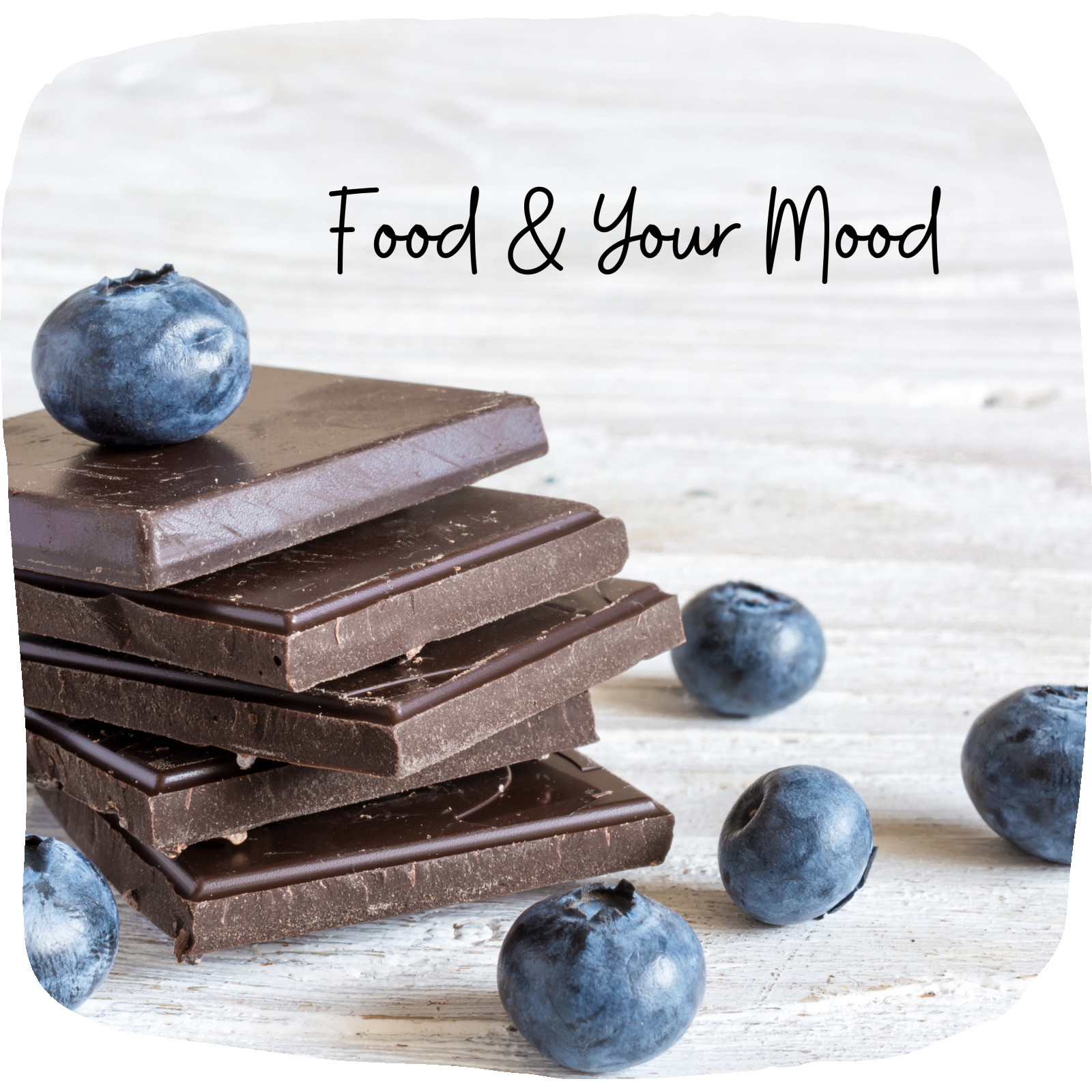
Hey friend,
Have you ever noticed how the food you eat can totally change the way you feel? Maybe it’s a sluggish day after indulging in too many fried foods, or perhaps it’s that unexpected wave of calm after sipping on a cup of herbal tea. Well, it’s not your imagination. What we put in our bodies has a direct line to how our minds and emotions show up each day.
For a long time, I didn’t really make this connection. I used to think of food as just, well, food. Something to curb hunger, maybe something to enjoy socially, but not something that could actually impact my mood in meaningful ways. But, oh, was I wrong. Once I understood the connection between what I ate and how I felt, my entire perspective on nutrition changed.
If you’re hearing this and feeling a little skeptical, I get it—I was too. But stick with me, because this just might blow your mind. And by the end, you’ll have some practical tips for what to eat instead to help lift your spirits and keep you grounded.
The Food-Mood Connection
Here’s the thing about our bodies and minds: they’re deeply connected, way more than we realize. One of the reasons this happens is because of something called the gut-brain connection. Your gut isn’t just a digestion machine; it’s actually full of neurons (yes, brain-like cells!) that communicate with your brain all day long.
Ever heard of the phrase “trust your gut”? That’s kind of what’s happening here on a biological level. The health of your gut can influence everything from your stress levels to your ability to focus to how happy you feel. And food plays a massive role in all of this.
But not all food works for you. Some of it, especially highly processed junk foods, can mess with your gut health and cause major mood swings. Think about it. Have you ever felt an instant sugar rush after a donut only to crash a couple of hours later? That’s not helping anyone’s emotional well-being, right?
The good news? You don’t have to stay stuck in this cycle. The key is knowing what foods to swap out and what to eat instead.
Foods That Might Be Bringing You Down
Here are a few sneaky culprits that could be wreaking havoc on your mood:
- Sugary foods and drinks. I know, dessert is tempting (and you don’t have to cut it out entirely), but too much sugar creates wild spikes and crashes in your blood sugar, which can leave you feeling tired, irritable, and even anxious.
- Highly processed snacks. Chips, cookies, and packaged “quick fixes” are loaded with empty calories, unhealthy fats, and additives that do no favors for your brain or body.
- Refined carbs. Think white bread, pastries, or that giant plate of pasta. These tend to raise your blood sugar fast and then drop it just as quickly, leaving you feeling blah.
- Excessive caffeine. Believe me, I love my coffee. But too much of it can leave you jittery and interfere with sleep, which plays a huge role in mood stability.
So, What Should You Eat Instead?
Good news again, friend! Small changes can make a massive difference here, and it isn’t about being perfect. It’s about giving your body (and your mind) the nutrients they need to thrive. Here are some truly feel-good foods to focus on:
- Leafy greens. Spinach, kale, and other greens are packed with folate, which studies have linked to more stable moods. Plus, they’re loaded with nutrients that help protect your brain.
- Omega-3 rich foods. Think salmon, walnuts, chia seeds, or flaxseeds. These help reduce inflammation and have been shown to boost mental health.
- Fermented foods. Yogurt, kefir, kimchi, and sauerkraut are gold for your gut. By supporting healthy gut bacteria, they can help stabilize your mood and even ease some anxiety.
- Whole grains. Brown rice, quinoa, or whole wheat bread help keep your blood sugar steady, which also evens out your emotions.
- Dark chocolate. Yes, you read that right! A little bit of dark chocolate (I’m talking 70% cacao or higher) has been shown to reduce stress and boost your mood. Just keep an eye on portion size.
- Berries. These little powerhouses are loaded with antioxidants that can help fight stress and boost brain health. Plus, they’re naturally sweet, which makes them perfect when you have a sugar craving.
- Hydrating foods. Cucumbers, watermelon, and herbal teas all help your body stay hydrated, which is critical for focus and energy.
And you know what? This doesn’t have to be overwhelming. Start by adding just one or two of these to your meals this week. Pick something that feels easy for you and build from there.
It’s About Progress, Not Perfection
If this all feels new or even just a little tricky, don’t sweat it. I’ve been there. Like I’ve shared before, when life gets messy, food sometimes becomes the last thing I want to think about. But shifting my mindset to see it as an act of self-care, something that supports my mental and physical well-being, made a world of difference.
Remember this isn’t about cutting everything “bad” out of your life or being perfect. It’s about noticing how food makes you feel and making small, intentional choices that help you feel your best.
Want to Take It a Step Further?
If you’re ready to explore how your food choices could help transform your overall wellness, I’ve created a simple, insightful way to get started.
Take my free Dietary Assessment Quiz. It’s designed to help you discover the dietary approaches that best support your health and align with your unique lifestyle. Whether you want to refine your habits, manage health conditions naturally, or simply find balance in your daily choices, this quiz is the first step in empowering your wellness journey.
It’s not just a quiz; it’s a chance to uncover personal insights that could set you on the path to a vibrant, more balanced life. Why not take the first step today?
Here’s to your journey toward a brighter, healthier you!
Angela
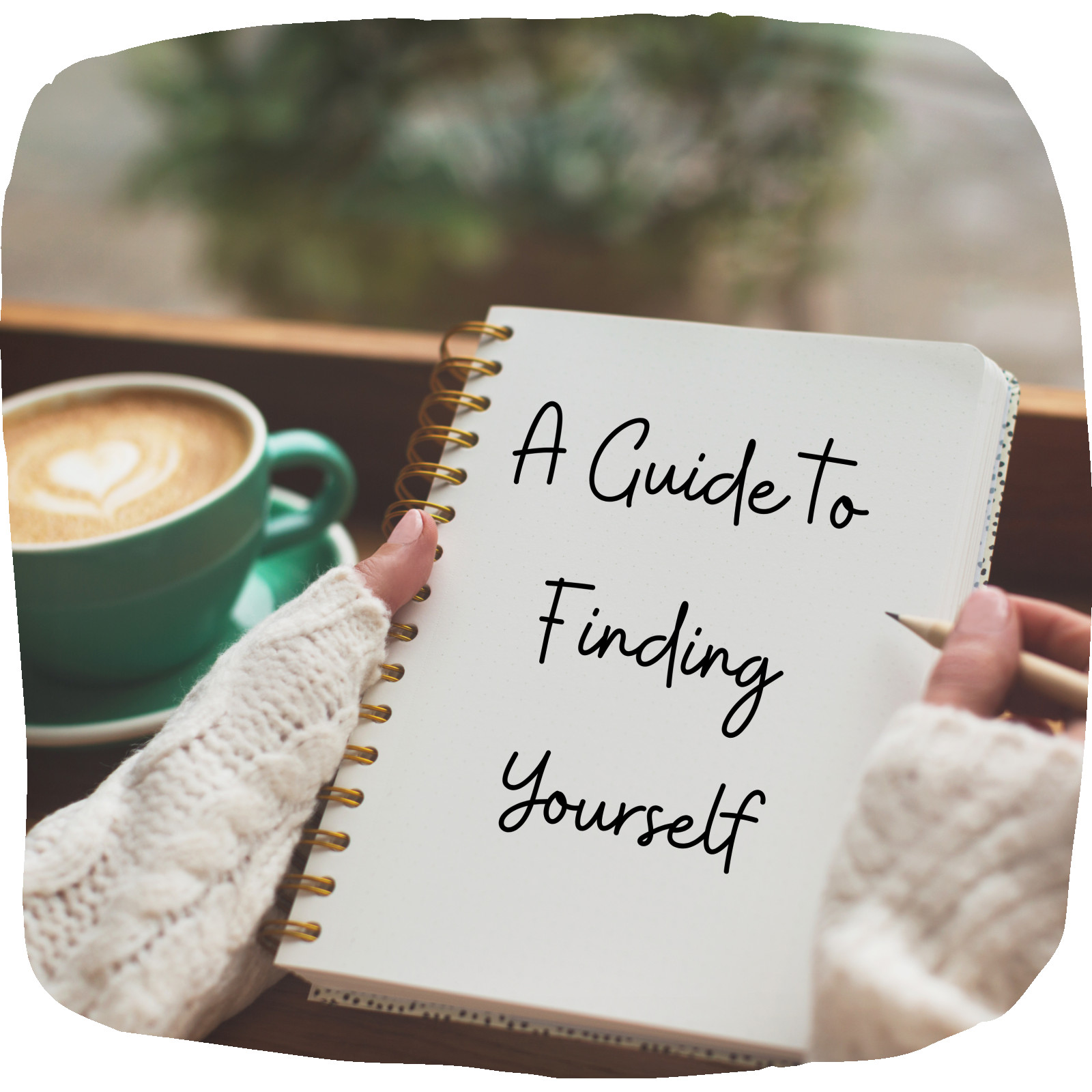
Hey Beautiful Soul,
Can we just pause for a second and take a breath? Because the fact that you’re even here, reading this, tells me something about you. It tells me that you’re ready. Or at least thinking about being ready. And that’s a big deal.
If we’re being real, I know what it feels like to lose yourself. I mean really lose yourself. I’ve been there—not just once, but multiple times. The first time was in my 30s, then again in my 40s. That second time it was gut-wrenching. I started over from nothing. No car, no job, no money, no home to call mine. All of it ripped away from me by someone who said they loved me. How’s that for love?
But you know what? I picked myself up. And now, as I step into my 50s, I feel something I never thought I would again—I feel free. Free to fully be me. And oh, friend, it feels GOOD.
But how do you even begin to find yourself when your world feels like it’s crashing down? That’s the hardest part, isn’t it? Figuring out where to even start. For me, it looked a little like this…
Step 1: Focus on the Good
I know this one might feel impossible when everything is so heavy, but it’s also the thing that saved me. I started a simple practice of keeping a gratitude journal, and honestly, it changed my life. Every morning, I wrote down three things I was thankful for. Then, at night, I’d write down three things that had gone well in my day, no matter how small.
At first, my lists felt kind of silly. “I’m thankful for my coffee” or “I didn’t cry today.” But you know what? Those little things added up. Slowly, they helped me see that even when everything felt like a mess, there were still bits of good. And when you can hold onto those, even the smallest pieces, you start to feel a tiny flicker of hope again.
If you try anything, try this. It doesn’t take long, and I promise it makes a difference.
Step 2: Treat Your Body Like It Matters (Because It Does)
Here’s something I had to learn about myself during the hard times. When life gets messy, my appetite disappears. Food becomes the last thing on my mind, and honestly, I could go all day without eating if I wasn’t careful. But the thing is, not eating wasn’t helping anything. My body needed fuel to handle all the stress I was under.
That’s when I made an intentional choice—I started focusing on eating healthy food, even when I didn’t feel like it. I learned what foods supported my health and energy levels and made a conscious effort to choose those over junk. It wasn’t about drowning my sorrows or using food as comfort. It was about feeding myself because I deserved to be healthy.
This realization wasn’t easy, but looking back, it made such a difference. I didn’t just feel better physically—I felt like I was taking control of one small thing when everything else felt out of control.
Step 3: Keep Moving (Even When You Don’t Want To)
I’ve always been someone who struggles to keep going with workouts during tough times. Life throws curveballs, and the first thing I’d want to skip was exercising. But what I eventually learned was that movement is exactly what I needed during those moments of chaos.
I had already started to love working out before my life got turned upside down, but it was hard to hold onto that love when everything felt heavy. Instead of giving up, I found programs that I really enjoyed. For me, it was lifting weights. There was something empowering about feeling strong, like I was taking my power back one lift at a time.
Yoga, on the other hand, wasn’t something I naturally gravitated toward. It didn’t click with me right away, but once I gave it time, something shifted. Yoga became about more than stretching or breathing. It helped me slow down, listen to myself, and reconnect with my body in ways I hadn’t before. Over time, it felt less like a workout and more like a way to center myself and hear what my heart and my guides were trying to tell me.
Working out, whatever form it takes for you, isn’t just about fitness. It’s about creating space to feel stronger inside and out. Trust me, it’s worth it.
Step 4: Feed Your Mind With the Good Stuff
This one took me a while because, honestly, I used to roll my eyes at the whole idea of personal development. I thought it was cheesy. But friend, it’s not.
When I was at my lowest, I started reading and listening to things that were uplifting. I discovered people like Brené Brown, and they got me thinking about my own life in ways I never had before. I learned how to set boundaries and show myself grace. I learned that I wasn’t stuck and that my life could change if I wanted it to.
That’s the magic of personal development. It’s not about “fixing” you—I hate when people make it seem that way. It’s about showing you what’s possible. About reminding you of the strength that’s already inside of you.
Step 5: Give Yourself Grace
Can I be honest? Healing is messy. There were days when I felt strong and hopeful and like I had it all together. And then there were days when I didn’t want to get out of bed. That’s just the truth of it.
But on those hard days, I learned to give myself grace. To remind myself that I was human and that it was okay to feel stuck sometimes. When you’re rebuilding your life, it’s not about perfection. It’s about taking one small step at a time and forgiving yourself when things don’t go perfectly.
Step 6: Live for You
It wasn’t until I was nearing 50 and chose to move into this new year mindfully and with intention that I really stopped and asked myself this question: What do I want?
Not what someone else wants for me. Not what society says I should want. What do I want?
It was terrifying at first because I didn’t really know how to answer that. But once I started listening to my gut and trusting myself again, everything began to shift. I stopped trying to please everyone else and started building a life that felt good to me.
And you know what? That’s the most freeing thing you can do for yourself. To stop living for others and start living for YOU.
Final Thoughts
If you’re in the middle of a big life change right now, I want you to hear me when I say this—I’ve been there. I’ve sat in the rubble, unsure if I could put the pieces back together. But I can promise you, you can. Not just because I did it, but because you have everything you need inside of you already.
And if you’re ready to take that next step, I’d love to guide you through it. My one-on-one coaching program, The Empowered Confidence Blueprint, is a 90-day transformation designed to help you break free from self-doubt and fear, reclaim your voice, and step powerfully into the confident woman you were meant to be. Together, we’ll work to silence the inner critic, set boundaries without guilt, and give you tools to carry your confidence forward into every area of your life.
You’ve waited long enough to invest in YOU. Now is your time.
With so much love,
Your biggest cheerleader
Your biggest cheerleader
Angela

Can we take a moment together? Just you and me. Because I know firsthand how overwhelming it can feel to want more for yourself, to dream of a better, brighter life, and then wrestle with thoughts that whisper, “You can’t do this.” Those thoughts? They’re not the truth. They’re self-limiting beliefs, and they’ve been taking up way too much space in your mind and heart. It’s time to evict them.
Here’s the deal. We all have stories we tell ourselves that hold us back. These stories didn’t appear out of nowhere. They might come from things we’ve been told in the past, from tough experiences, or even from our own fears. But the good news? Just because you’ve believed them before doesn’t mean you have to keep believing them.
I’m here, cheering you on, as we call these beliefs out for what they are. And I’m going to help you start breaking through them so you can live the amazing, authentic life you deserve. You ready?
Here are ten self-limiting beliefs that might be standing in your way and how we can challenge them together:
1. “I’m too old to start over.”
Oh, love, let me stop you right there. You’re not too old; you’re standing at the perfect moment. Every day that you’re alive is another opportunity to grow, change, and begin again. Think about it this way: Do you want the next five, ten, or even twenty years to look just like the last? I didn’t think so.
Here’s how to reframe it. Instead of thinking of starting over as a loss, think of it as a gift. You’ve got wisdom, experience, and resilience you didn’t have in your 20s. That new chapter you’re scared to start? It’s waiting for you.
2. “I’m not good enough.”
This one hits deep, doesn’t it? We’ve all felt it. But stop and ask yourself this question the next time it creeps in: Good enough for who? For what? Who gets to decide your worth?
Now repeat this out loud, even if it feels silly at first: I am enough. I have always been enough. I will always be enough. Because you are. Exactly as you are.
3. “I’ll fail if I try.”
Failure isn’t a verdict. It’s feedback. And oh, friend, if you could sit and hear how many times I’ve stumbled and gotten back up, you’d know that every single failure has taught me something valuable.
The key is not letting failure stop you. Instead, look at it as part of the process. What can you learn from it? What’s the next step after that setback? Trust me, your biggest successes will come from moments when you didn’t give up.
4. “I don’t have time for myself.”
If I had a dollar for every time I told myself this…! But being busy isn’t the same as being fulfilled. And you, my friend, deserve a life filled with meaning—not just activity.
Start small. Block out ten minutes for yourself each day. Take a walk, journal, breathe. Little by little, these moments add up. You’re allowed to take up space in your own life.
5. “Others have it worse. What do I have to complain about?”
You’ve always been so good at caring for others, haven’t you? But here’s the thing. Your struggles, your pain, and your desires don’t become less important just because someone else has challenges too.
What you’re feeling is valid. It matters. And the more you honor your own needs, the stronger and more capable you’ll be to help others when you choose to.
6. “I’m just not the kind of person who can succeed.”
That voice telling you that success isn’t meant for you? It’s not yours. It probably belongs to someone else who planted that doubt in your mind long ago.
Here’s the truth. You can shape your future any way you want. No one is inherently “meant” for success. It’s something you build over time. Start small, take one step, and watch the momentum grow.
7. “I can’t trust myself.”
I know how hard it can be to rebuild trust in yourself after that trust has been broken. But I believe with everything in me that you can. You’ve overcome so much to be here today, reading this.
Start practicing by listening to your gut on the small things. Make a decision and stick with it, even if it feels uncertain. It’s like a muscle—the more you use it, the stronger it will become.
8. “I need to make everyone else happy.”
This belief? It’s a sneaky one that keeps you stuck. You’ve spent your life being everything for everyone else, haven’t you? And who’s shown up for you the way you’ve shown up for them?
Here’s the truth. You’re never going to please everyone. The one person you can make happy is yourself. And when you start choosing you, you’ll find the kind of fulfillment that no amount of people-pleasing will ever bring.
9. “It’s selfish to focus on myself.”
Oh, friend. Where did we learn this? That our value is tied up in how much we give, how much we sacrifice? I’m here to tell you something deeply important now, so lean in close. Taking care of yourself isn’t selfish. It’s survival. It’s self-respect. It’s necessary.
When you show yourself love and care, you teach others how to treat you. And you remind yourself that you are worthy—not because of what you do for others, but because of who you are.
10. “It’s too late for me to change.”
It’s never too late. Did you hear me? Never. Every breath you take, every sunrise you wake up to, is a chance to start again. There is no expiration date on growth.
Imagine the life you want to create for yourself. The vibrant, joyful, fulfilling life you’ve dreamed of. It’s not gone. It’s waiting for you to claim it. One step at a time.
Breaking Free
I know these beliefs can feel heavy, like chains holding you in place. But you don’t have to stay stuck. Start by calling out one belief at a time. Write it down, challenge it with the truth, and replace it with a more empowering story.
What’s one small shift you could make this week? Maybe it’s setting a boundary, taking ten minutes of quiet time for yourself, or journaling about the dreams you’ve been putting off. Start small—but start.
I’m rooting for you, always. Because you? You are capable of so much more than you give yourself credit for. And I cannot wait to watch you grow into the life you’ve always deserved.
You’ve got this. And I’m here, cheering you on every step of the way.
With love and belief in you always,
Angela xoxo
P.S. Are you ready to take the next step on your journey? Join my newsletter, The Life You Deserve! It’s a safe, empowering space where I share regular inspiration, practical tips, and heartfelt support to help women like you rediscover their confidence, heal, and build a life overflowing with joy and purpose.
If you’re ready to create the life you’ve always dreamed of, I’d love for you to be part of our community. Sign up today and start receiving encouragement straight to your inbox. You deserve this, friend. Always.

What are you going to be doing in your next chapter of life? It’s a question I’ve been asked more than once recently. For now, I’m keeping the details close to my heart, but my answer is simple yet profound: “I’m going to find myself.”
Turning 50 has stirred something inside of me. And before I go further, I want to say this loud and clear—I love being 50. I really do. While society might try to paint midlife as a crisis, I see it as a pivotal moment. I’ve lived so much life, and the thought of what’s still ahead excites me. Fifty feels like a badge of honor, a cool milestone that isn’t about clinging to youth but about stepping into who I truly am.
Losing Myself in the Noise
But here’s the thing—somewhere along the way, I lost parts of myself. Maybe you can relate. I spent so many years pouring my energy into others—family, friends, work—without really asking for much, if anything, in return. It’s supposed to be this admirable thing, right? To give selflessly? And in many ways, it is. But no one tells you the quiet cost of always putting yourself last.
You can lose touch with the person you are when no one’s asking for a favor or needing your support. You forget what makes your heart beat faster or your soul feel full. Your dreams take a back seat to someone else’s. And for those of us with a deep well of empathy, it’s even harder to define where you end and where others begin. Suddenly, their hopes and desires seem like yours. Their beliefs start to sound like your own. It sneaks up on you, and one day you realize, when someone asks, “What do you want?”—your answer doesn’t sound quite like you anymore.
Choosing Myself
This realization hit me in the weeks leading up to my 50th birthday. It wasn’t this dramatic epiphany, more like a chorus of whispers finally making themselves heard. And you know what? I’m ready to listen. I’m letting those voices guide me as I move into this next chapter.
I know it won’t always be easy. Change rarely is, even for those of us who thrive on some level of chaos. But this kind of change feels different. It feels like an unwrapping of something that was always there but got buried under the weight of life’s demands.
I’m excited—deeply, wildly excited—to get to know this new-old version of me. The “me” I’ve always been, beneath the expectations, responsibilities, and roles I’ve taken on. This time around, I’m showing up for myself first.
Finding Freedom
It feels a little rebellious, honestly. To unapologetically decide that my life, my needs, my joys are worth discovering. It’s a choice to live without restrictions, without having to work around or fit myself into someone else’s narrative. And that’s where the song Wild Child by Kenny Chesney comes in.
If you haven’t heard it, take a minute. Listen to the words. It’s about someone with an untamed spirit—someone who’s unapologetically themselves, marching to the beat of their own drum. To me, it’s the perfect anthem for this moment in my life. It captures the freedom I’m chasing and the independence I’m claiming.
Because that’s what this feels like—an opportunity to be unapologetically, beautifully me. And not just for this chapter, but for every chapter to come.
What About You?
If any of this resonates with you, I’d love to know. Have you found yourself in a season of rediscovery? What helped you reconnect with the real you?
Here’s to choosing ourselves, our peace, and our truth. Here’s to finding those quiet parts of us that deserve to be seen. And if it feels a little wild along the way? Even better.
Que Wild Child—turn it up, and don’t look back.
